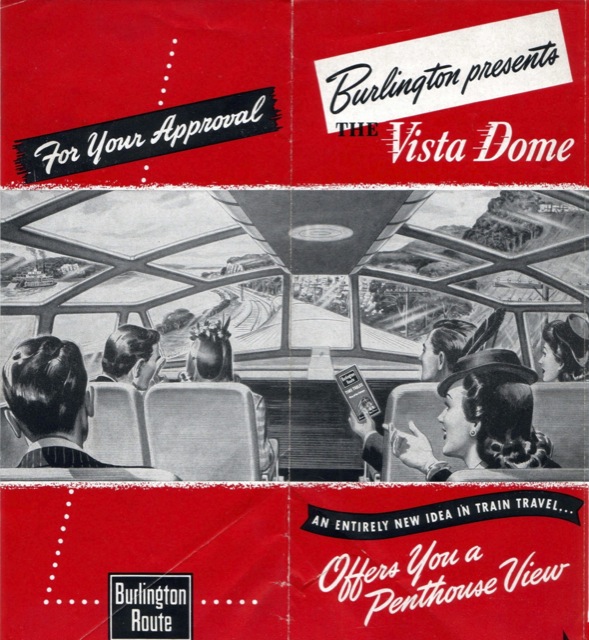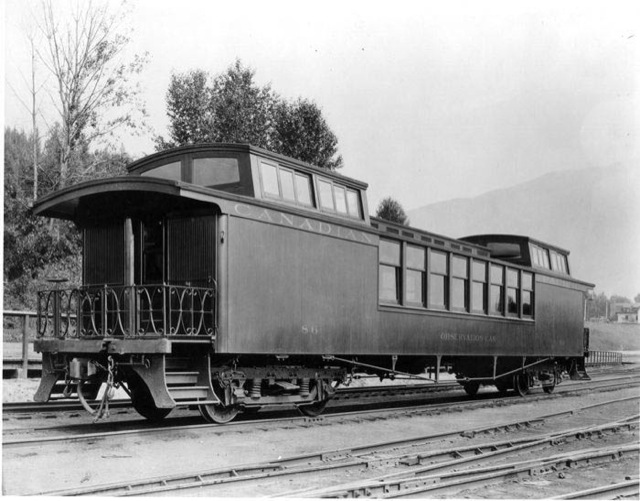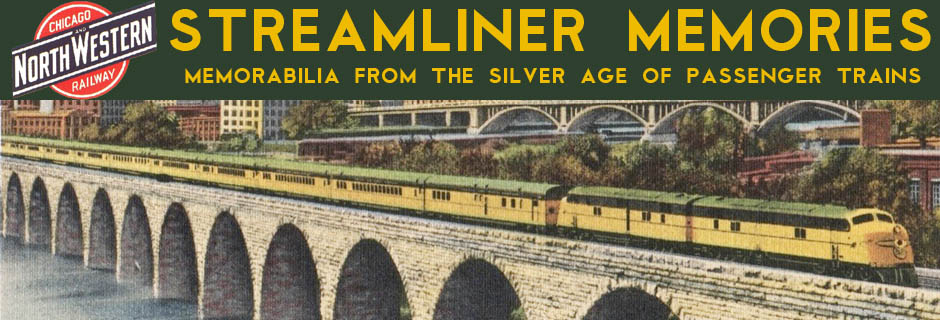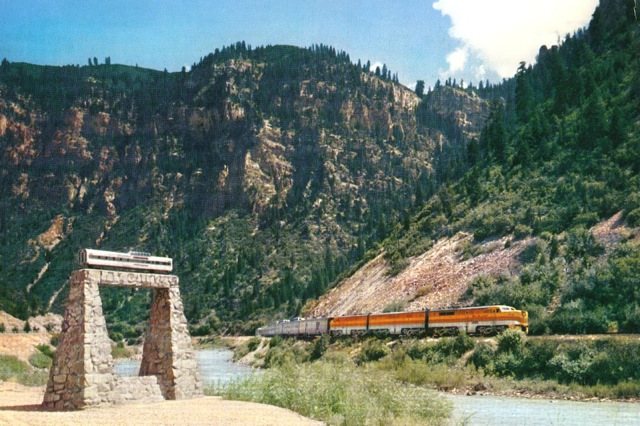In 1944, Cyrus Osborn, a General Motors vice president in charge of its Electro-Motive Division that built Diesel locomotives, rode in the cab of a Rio Grande Diesel through Glenwood Canyon in Colorado. “If the traveling public only knew what they could see from the operating cab of a Diesel locomotive or caboose of a freight train,” he remarked afterwards, “the railroads could sell seats in these two places at $500 apiece and always keep them full.” That night, on stationery from the Hotel Utah, he sketched an idea for the first modern dome car that would offer a view even better than from a locomotive cab: a car with a bubble on top giving passengers 360-degree views of the landscape.
“A monument to an idea.” The Rio Grande Railroad erected this memorial in Glenwood Canyon, where Osborn first conceived the modern dome car, in 1950. When Interstate 70 was expanded in this location, the monument was moved to the Colorado Railroad Museum in Golden, where it can still be seen today. Click image for a larger view of this postcard, which shows the Alco PA-powered California Zephyr, with its five dome cars, in the background.
Osborn shared his idea with other railway executives, and Ralph Budd of the Burlington immediately told his mechanical chief to cut a hole in the top of the next Budd-built coach to go through the railroad’s shops and put a dome in it. The car happened to be called “Silver Alchemy,” but after the dome was installed, it was renamed “Silver Dome.” The railroad introduced it to the public in 1945.

Click image to download a 3.1-MB PDF of this four-page brochure describing Silver Dome and providing a remarkably accurate illustration of what future dome cars would look like, including curved-glass windows with restrooms beneath the dome instead of at the ends of the car.
Because the floor of the car could not be lowered, the Burlington had to make some compromises. The original car had restrooms at each end, so the Burlington put revenue seats under the dome, where headroom was very limited due to the need to provide headroom in the aisle of the dome. Since the dome seats could be elevated above the aisle, there was room in the lower level for an aisle on either side. This meant the revenue seats under the dome had an aisle on either side of them, so passengers sitting in those seats had to look at the views through passengers who might be walking down the aisles. Later domes would be built with a lowered floor under the dome to avoid this compromise.
The Burlington tested the cars on the Twin Cities Zephyrs and received such a positive response that in 1946 it ordered five new dome cars for each of the Twin Zephyrs from the Budd Company, and soon ordered many more for its other Zephyr trains.
By 1950, the Burlington had purchased or ordered close to 40 dome cars from Budd. Despite the compromises required for Silver Dome, the railroad liked the car so well that it converted another coach, Silver Castle, into an identical dome in 1949.

While Silver Dome was the first modern dome, a few railroads had experimented with the dome concept decades earlier. John White’s monumental book, The American Railroad Passenger Car, says that the Burlington had a “birdcage car” in the 1880s, but it was probably just a track inspection car not used for revenue passengers. The first documented passenger dome car is the above car used by the Canadian Pacific, probably just in the portion of its line over the Rocky Mountains. Built in 1902, the railroad built three more in 1906, but scrapped them a few years later as it shifted from wood to steel cars.

